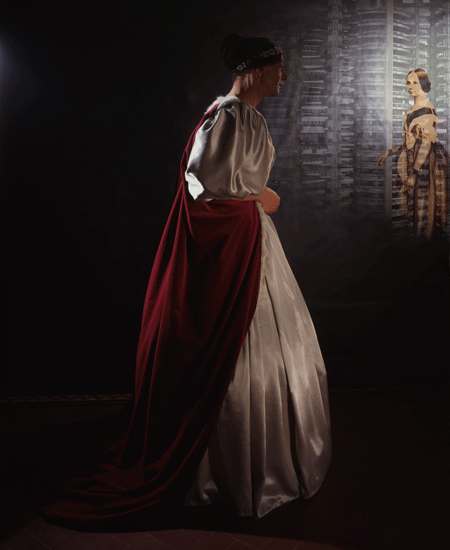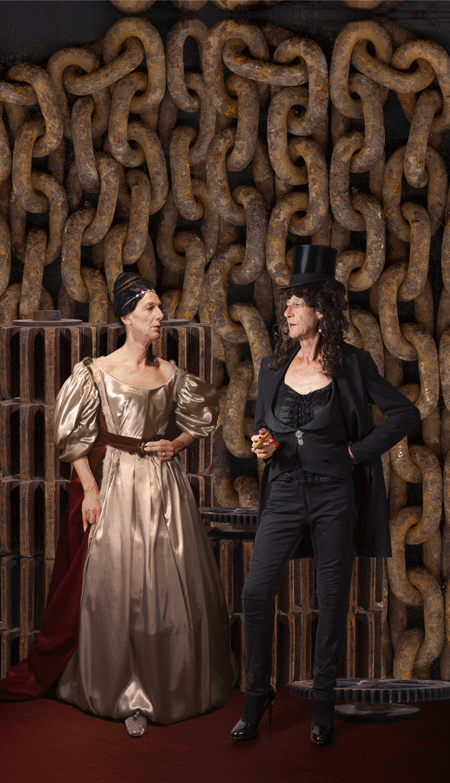Phil Sayers
Ada Lovelace
[back to new work]These works follow Sayers’ reconstruction of Margaret Carpenter’s 1836 portrait of Ada Lovelace made in 2000
(see Previous Projects - 1998–2006).
 |
Here Sayers’ reincarnation of Ada looks forward into the light to see a ghostly vision of the ‘real’ Ada Lovelace as she appeared aged 28 in 1844 at the height of her mathematical achievements. She appears among the machinery of Charles Babbage’s ‘Analytical Engine’ originally conceived in 1834, about which she had written much theoretical material. Babbage called her ‘the Enchantress of Numbers’. |
Looking forward to the past |
|
 |
This work was commissioned for the exhibition Fabricating Histories at Discovery Museum, Newcastle-on-Tyne, 2016/17. Here we see Ada transformed into Isambard Kingdom Brunel. What if she had been a man? During her lifetime she was acquainted with eminent scientists like John Herschel, Michael Faraday and Andrew Crosse among many others. If she had been a man, would her ground-breaking mathematical achievements now be as celebrated as theirs in astronomy, electricity and electro-magnetism? Would she have an iconic reputation comparable to Brunel’s? This work poses these questions by conjuring a fantasy of Ada in conversation with her alter-ego Brunel, perhaps discussing the engineering problems of how to accurately manufacture cogs for Babbage’s Calculating Engine. What if she had lived beyond the age of 36? |
What if? (A.A.L becomes I.K.B) |
|